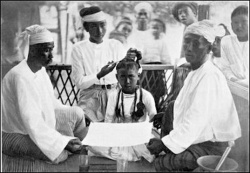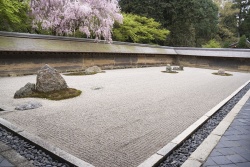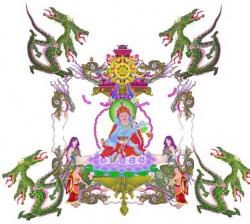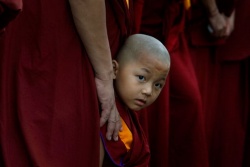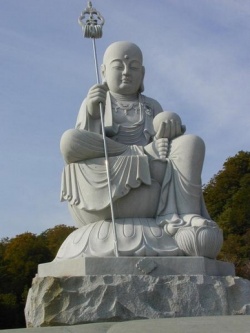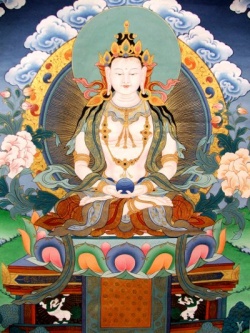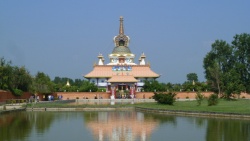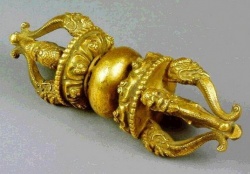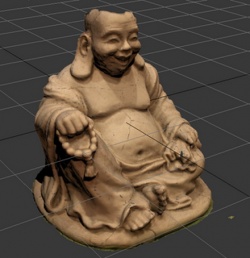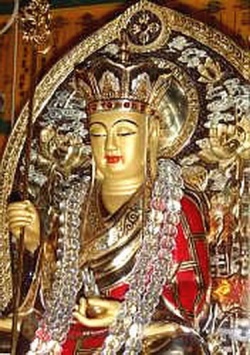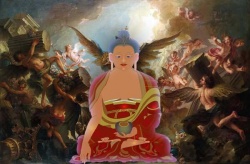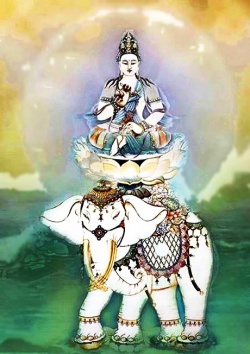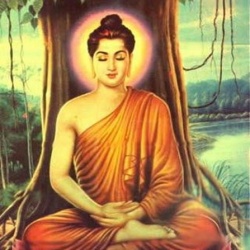Kongpo
Kongpo (Tibetan: ཀོང་པོ་, Wylie: kong po) is a region in Gongbo'gyamda County, Nyingchi Prefecture. It is situated on the Nyang River, a northern tributary of the Yarlung Tsangpo River.
Kongpo was an area of southeastern Tibet in the premodern period. Tsagong was one of the holy places of Kongpo and still is. Thang Tong Gyalpo, a famous architect and yogi, founded Manmogang Monastery, where the original Samding Dorje Phagmo died. Nearby are the mines from which Thang Tong Gyalpo obtained the iron for some of his bridges.
Old Tsari is now part of the modern county of Lhuntse in the southeast of the Tibet Autonomous Region and including parts of neighboring areas of India, and New Tsari is located farther east.
Name Kongpo
Transliteration form kong po
Pronunciation Kongpo
Etymology kong = concave, excavated, crooked, bent, warped, cup, crucible, country of ravines
Source of information Blue Annals
Spatial Location Lhoka, Southeast of Lhasa
Nation China
Province Kongpo
District
Cultural location Tibet
Location's language Tibetan
Discussion in the Blue Annals
In the Blue Annals, Kongpo is the destination for many who wish to receive teachings. It is also the site of many visits to and foundings of monasteries, as well as the site of reincarnation of Rolpé Dorjé. Kongpo was also the occasional residence of Rangjung Dorjé. Kongpo is often mentioned in relation to Ü, since they share a border and travelers must pass through this region on their way from Ü. In this sense it serves not only as a geographical region but as a landmark for travelers leaving Central Tibet. In the same way, frequently teachers are described as bringing benefit to beings as far as Kongpo, or banishing hunting as far as Kongpo, showing that it was considered in some ways to be a border of the known world for Central Tibetans, as well as a fairly far-off place. Blue Annals References
R 181
He also imparted precepts to the Khampas (khams pa) who had come to Tshodzong (mtsho rdzong) in Kongpo, and they passed away without leaving behind their physical bodies. R 198 - xii. rig ‘dzin ku mA ra rA dza (Chengdu 245, R 197)
Melongpa's (me long pa) disciple Rigzin Kumara Radza (rig ‘dzin ku mA ra rA dza): When Melongpa was 24, he was born at Barsar Dzingkha (bar gsar rdzing kha) to Josré Sönampél (jo sras bsod nams dpal) and Khyabza Bummé (khya bza’ ‘bum me) in the year Fire-Male-Tiger (me pho stag—1266 A.D.). He was named Tharpa Gyen (thar pa rgyan). From his childhood he showed great commiseration, great wisdom (R:198) and understood reading and writing without having studied. At the age of 7, he obtained initiation into the Hevajra and Saṃvara systems from a guru, a devotee of Hevajra, of the monastery of Ösho Thoten (o shod mtho stens) in Kongpo (kong po). (C:246)
R 200
From Kongpo as far as Gyel (g.yal), he prohibited the laying of road traps, fishing nets and traps in the mountains, and taught skilfully the theory (of Nyingthik {snying thig}) with the help of terminology peculiar to that system, without mixing the precepts of Nyingthik with those of the Sampannakrama degree.
R 278
The (F:17b) Poto (po to) elders and the kalyāṇa mitras who followed the basic texts of the Kadampas (bka’ gdams pa) held a council, and presented him with the monastery of Poto, together with its branch monasteries, as well as entrusted him with the keys of the temples of about 30 monasteries of Kongpo, headed by Tawar (rta bar), Üchu (sbu chu) and Changlung (byang lung).
R 481
After that he proceeded towards Kongpo and met the Lama Ngaripa (bla ma mnga' ris pa), from whom he heard many precepts. R 491
491 - After that, he visited Gampo (sgam po) and Kongpo and labored extensively for the benefit of others. He also visited Tsari Gyumtsho (tsa ri gyum mtsho). On the whole, he spent three years in Kongpo. In front of the snows of Śambu, he saw many auspicious (F:39a) signs of the "Inner" and "Outer" (phyi nang) spheres. While residing at Jomogang (jo mo gang), he had a vision of the acārya Padma and received his blessing. While residing at Tshurpukung ('tshur phu kung), he saw the planets and stars of the "Outer" and "Inner" spheres agree between themselves, and composed a treatise on astrology. After that he founded the monastery of Dechenteng ([[bde [chen stengs]]), where he had many visions. On his way to Nyingkhung (snying khung) and other hermitages of Kharakshar (kha rag shar), he also had many visions. At Dechenteng he discovered that the signs of the "Outer" and Inner" spheres had been purified and composed a treatise called "the Hidden inner Meaning" (R:492) (zab mo nang don). R 492
Having again proceeded to Kongpo, he founded numerous monasteries there. He established many disciples in salvation, and stayed at Nakphu (nags phu) and other places.
R 493 - vii. rol pa’i rdo rje (a.k.a. kar ma pa IV)
The Dharmasvāmin Rolpé Dorjé (rol pa'i rdo rje): The Dharmasvāmin Rangchung Dorjé (rang byung rdo rje), himself incarnated in him. When Tawon Gushri (ta dbon gu shrI) (Ta Yüan Kuo shih) asked the Dharmasvāmin: "Your Holiness (drung nas), I also wish to go to that place where Your Holiness will be reborn presently! Please confirm this to me!" "If you are filled with such devotion, (I may, tell you) I shall be coming to Kongpo." In accordance with this he came to Kongpo as a child.
R 494
At that time, the child said to his mother: "I am Karma Pakshi's (kar ma pa shi) reincarnation! I shall have numerous disciples in this Jambudvīpa. You just see!", and saying so, he assumed the posture of Amitābha. Do not talk about it!" added the child. His mother then said: "Now we must go to Lhasa (lha sa)"! The child inquired: "Is it possible for us to proceed now?" and then added: We should (first) go to Zhoka (zho kha) of Kongpo, to Drakchi (brag phyi) and Naklu (nags plu), and see them. Under the "Hole of Yamāntaka (the place were the Tsangpo {gtsang po} is said to sink below the surface), there is situated the edge of the 'Cauldron of Hell,’ I must lead the living beings out of Hell. After seeing my face, they will not go to damnation. I shall gradually go to Tshurphu ('tshur phu), Karma (kar ma) and the Imperial Palace. In the Imperial Palace I have countless disciples."
R 505-506
After that he again journeyed to Kongpo (F:45a) and labored extensively for the benefit of others. He visited (R:506) Powo (spo bo) and then again returned to Kongpo.
R 507-508
He also, visited Karma, Riwoché (ri bo che) and other places, and preached the Doctrine (revolved the Wheel (R:508) of the Law). Again he journeyed to kong po. At the age of 20, in the year of the Horse (rta lo 1402 A.D.), he took up final monastic ordination at Tselhagang (rtse lha sgang) in the presence of the mahā-upādhyāya Sozangpo (bsod bzang po) and the mahā-upādhyāya Yönlowa (yon blo ba), and of about eighty priests. R 515
He then journeyed gradually towards Kongpo and labored extensively for the benefit of others. After that (R:516) he visited Olkha Trashi Thang ('ol kha bkra shis thang) (tsa ri) via Dakpo (dags po). The mahā-upādhyāya Sozangpa sent a sedan-chair (do li) to receive him, and he manifested the manner of proceeding there. Wangdrakpa Gyelmtsen (dbang grags pa rgyal mtshan) offered him tea. He (the Dharmasvāmin) attended on the Trulku Chopel Yeshé (sprul sku chos dpal ye shes), the Dharmasvāmin Rongpo (rong chen pa) and others, and manifested the manner of studying with them. In short, he visited the regions of Kham, Kongpo, Dakpo, various places in Tibet, and various localities of Central Kham, and numberless were his labors for the salvation of living beings.
R 524
Then in the year Earth Male Ape (sa pho spre'u 1308 A. D.), he came to Tsurphu ('tshur phu). At that time, the Dharmasvāmin Rangjung Dorjé, having been invited to Kongpo, was residing in Kongpo. He heard many doctrines from the ācārya Tsulrin (tshul rin), including the initiation to the Guhyasamāja Cycle and the Tantra. R 525
When the Dharmasvāmin Rangjung Dorjé arrived from Kongpo, he went to meet the Dharmasvāmin at a place where the hierarch was presiding over a festival held by Tselpa Gadé Shekpa ('tshal pa dga' bde gshegs pa). Having mastered the Prajñāpāramitā within four years, he made a round of the monasteries in Tsang (gtsang) for the purpose of debating and became famous as one versed in the language of the Prajñāpāramitā.
R 529
He then bestowed the initiation into the Ngatsen (lnga tshan) on about twenty disciples, including Tokden Egyel (rtogs ldan e rgyal), the upādhyāya Tsul Lo (tshul blo), Tönpa (ston pa), Lhajé Gyemzangpa (lha rje gyam bzang pa) and others. This was the first occasion on which he had performed an initiation ceremony. Henceforth he labored extensively for the welfare of others by bestowing initiations and instructions. He used to say "The Dharmasvāmin when he was going to found the monastery of Nakphu (nags phu) in Kongpo, appointed me, against my wish, abbot of the Déchen (bde chen) monastery. But I refused to comply with his command. Because of this, in later life my own disciples disobeyed my words."
R 542-543
Then gradually he visited all the districts of Kongpo. (R:543) In particular, he spent a considerable time at Chinlek (byin legs) of New Tsari. R 544
He passed away at the age of 56 on the 29th day of the seventh month of the year Wood Female Hen (shing mo bya 1405 A.D.). At the time of his death a heavy shower of flowers fell and the whole of the sky was filled by a net of rainbows. His remains were placed in a palanquin, and a golden caitya was built at Ganden Mamo (dga' Idan ma mo) (in Kongpo). The remains were enshrined inside the caitya. All this work was done by the Lama Chözang (chos bzang) and the monk Drakpa Gyelmtsen (grags pa rgyal mtshan). R 548
On being invited to Powo (S.E. Tibet), he proceeded to Yégong (ye gong) and other places. At the age of 8, he met the Dharmasvāmin Dezhin Shekpa (de bzhin gshegs pa) at Wangdo (bang mdo) on the border of Kongpo and Ü (dbus), took the upāsaka vows and was praised greatly. R 549
Starting his journey from Üru (dbu ru), he proceeded via Nyangpo (myang po) to Kongpo. R 551 - 8.8.8 zhwa dmar cod pan 'dzin pa (chos grags ye shes) (b 1453)
His incarnation the Precious Dharmasvāmin Zhamar Chöpan Dzinpa (zhwa dmar cod pan 'dzin pa), "Holder of the Red Hat" (Chödrak Yeshé {chos grags ye shes}), the Fourth, was born in the year Water Female Hen (chu mo bya 1453 A.D.) at Treshömthil (tre shod mthil). Immediately on his birth, he began to labor for the welfare of others. He heard the Doctrine from the Dharmasvāmin Karmapa (kar ma pa), the Lama Wankarwa (ban dkar ba), Jampel Zangpo ('jam dpal bzang po), Gushri Peljor Dondrubpa (gu shrI dpal 'byor don grub pa), and proceeded to Kongpo, where he was invited by the ācārya Lama Gyelmstenpa (rgyal mtshan pa). There he heard numerous initiation rites, such as the Vajramāla (Dorjé Trengwa {rdo rje phreng ba}) and others, numerous expositions (of sacred texts), permissions (lung) to read many Kabum (bka' 'bum), etc., as well as visited the upper and lower districts (of Kongpo).
R 591
About that time due to some slander, his (F:82a) ācārya Sherdonpa (sher don pa) had to go to Kongpo to Khachöpa (mkha' spyod pa). R 603
Again he came to Drikhung (‘bri khung) and founded the monastery of Lungshötar Chöding (rlung shod dar chos sdings). A numerous congregation of monks gathered there, and he thought that this monastery might become a rival to Drikhung. Therefore having given up the monastery, he proceeded towards Yartö (yar stod) and journeying via Dakpo, he gradually came to Powo (near Kongpo). He laid the foundation of Phurgon Rinchen Ling (phur dgon rin chen gling), and after 63 days passed away. Through his blessing, this monastery became the chief seat (of his teaching), and was taken over by his nephew Ürgyenpa (u rgyan pa) and others.
R 647
At the age of 22, in the year Wood Male Dragon (shing pho 'brug 1424 A.D.) he came to the abbot's chair, and acted as abbot during 7 years, until the Iron Male Dog year (Icags pho khyi 1430 A.D.). After that he became an ascetic, wandered through all the uplands and lowlands, and looked after the welfare of others. He then transferred his residence to a hut (gzims spyil). At the end (of his life), he journeyed slowly to Kongpo and Amdo Kham (mdo khams), and looked after numerous disciples. He passed away at the age of 46 in the year Earth Male Dragon (sa pho 'brug 1948 A.D.) in Amdo Kham.
R 672
The Dharmasvāmin Kunga Peljor (kun dga' dpal 'byor (pa)) was born in the year Earth Male Ape (so pho spre'u, 1428 A.D.). He was in charge of the monastery of Drukralung ('brug ra lung). He attended on many teachers including, [[Trulzhik Namkha Neljor ('khrul zhig nam mkha' rnal 'byor) and others. Later, he also acted as abbot of Gampo (sgampo). He died in the year Fire Male Ape (me pho spre'u, 1476 A.D.), aged 49. He had many disciples in Padro (spa gro), Tsang, Ü, Dakpo, Kongpo, Nyel (gnyal), Loro (lo ro), Lhomön (lho mon) (South]] mon), and other places. He resided at the monastery of the Dharmasvāmin Gampopa (sgam po pa). He entrusted the monastery to the descendants of Gampopa, and looked after the welfare of living beings. The Chapter on the Lineage of the Dharmasvāmin Tsangpa and (his) chief disciples.
R 694
Having gone to Lhalung (lha lung) he obtained instructions in the Doctrine fromRikpé Druktra (rig pa'i 'brug sgra). After that he proceeded towards Kongpo, and obtained precepts from the Dharmasvāmin Khachödpa and attended on him during the latter's journey to Powo. He obtained precepts from many teachers. R 696
He spent immured seven years at Śrī ri (near shel bkar) and the benefit was great, though he had been endowed with a yogic insight from the age of seventeen. This great ascetic proceeded towards Ü, and followed on many teachers, such as the Karmapa hierarch Rangjung Dorjé, Rikdzin Zhonnu Gyelpo (rig ‘dzin gzhon nu rgyal po) (Kumārarāja, a famous Nyingma lama {rnying ma bla ma}), and others. He stayed at shambu, Seljé Gang (gsal rje gangs) and other hermitages. He laboured extensively for the welfare of living beings as far as Kongpo. Lachen Rinzhonpa (bla chen rin gzhon pa) became his disciple. He composed also the life story of the Kagyupa (bka' brgyud pa) teachers, as well as composed several useful books. He became very famous. His accomplishments can be learnt from his detailed biography. The Chapter on the "Upper Druk sect (sTod 'brug). R 936
He (ten né) acquired (the power) of the transference of the vital principle (Drongjuk {grong ’jug}), and made an exhibition of the transference of the vital principle at the religious college (chos ra) of Nyok Josré (rnyog jo sras). Then in order to practise certain Tantric rites, he became a minstrel, and for six years (went about) singing songs. Then on the advice of Jowo Lhachenpo (jo bo lha chen po) of Chasa (bya sa), Lhatsun Ngönmo (lha btsun sngon mo) and Jowo Che'u Chungpa (jo bo bye'u chung pa), he again put on the monastic robes, and was nominated ācārya of the monastic college. Most of his time was spent in seclusion, during which he composed numerous commentaries (Shebum {bshad 'bum}) on the sayings of Dampa Sangyé (dam pa sangs rgyas). He decided to entrust his Lineage to Josré Namkha (jo sras nam mkha’), but the latter died young. One named Zhonpa Yatsé (gzhon pa ya tshe) was carried away by his desires. Having gone to Kongpo, he passed away. Because of his fame of possessing important precepts, numerous leading personalities of Ü and Kyor (gyor) addressed requests to him. R 1018
Small groups consisting of ten or fifteen monks, the smallest consisting of five, were found in dags po and kong po, at dbus and g.yor, in south and north la stod. They benefited greatly the Doctrine.
R 1040
mdzes ma bestowed (the Doctrine) on bya bral chen po, who was a native of yar klungs. Most of the time he stayed in kong po. He died at ‘On. In the beginning he used to be a very cleanly person, and disliked others, but afterwards he achieved emancipation independently (of others), used to eat his own excrement and applied it to his body. At times he offered it to the Ratna, at times to demons , and imitated insanity (smyon spyod). He was a priest of thel. He met (F:15b) Mitra at sar brag. He also met lha rje (dags pa lha rje) at sgam po. He met mid la at ‘ol kha. He passed away at mtsho phyi man khang of ‘On, aged seventy. He bestowed (the Doctrine) on sangs rgyas ri pa, whose native place was Yar kluns. At the age of 20, he met spyan snga chos bzhi pa and followed after every good Teacher. He heard the ‘khor ba rgyun gchod (the doctrine of Mitra). He acted as Vajradhara for five years at Kailasa. He became the Teacher of dbOn po deal ldan grags and of Upper hor (stod hor) and received the title of Imperial Preceptor (Ti Śrī, Ti shih). Having come to Kong po he practised the ‘khor ba rgyun gcod at the monastery of sar.
Source
https://collab.itc.virginia.edu/wiki/renaissanceold/Kongpo.html
